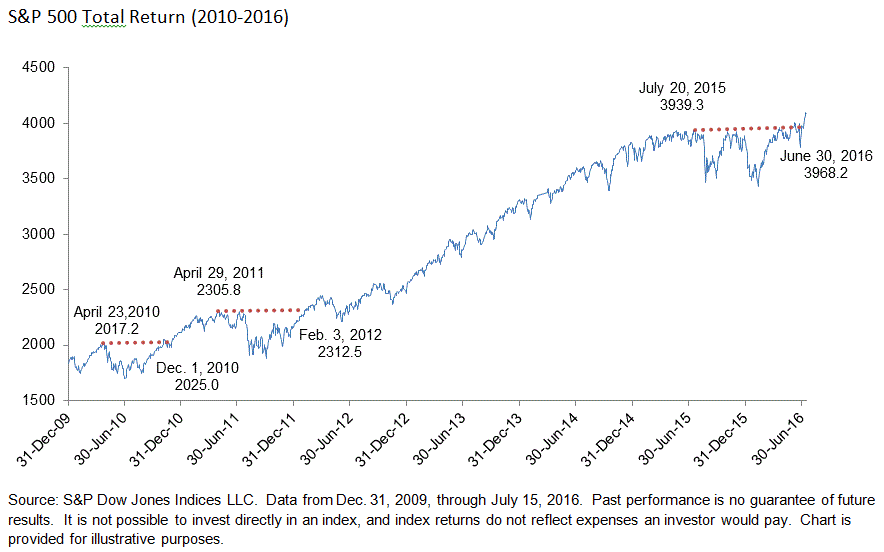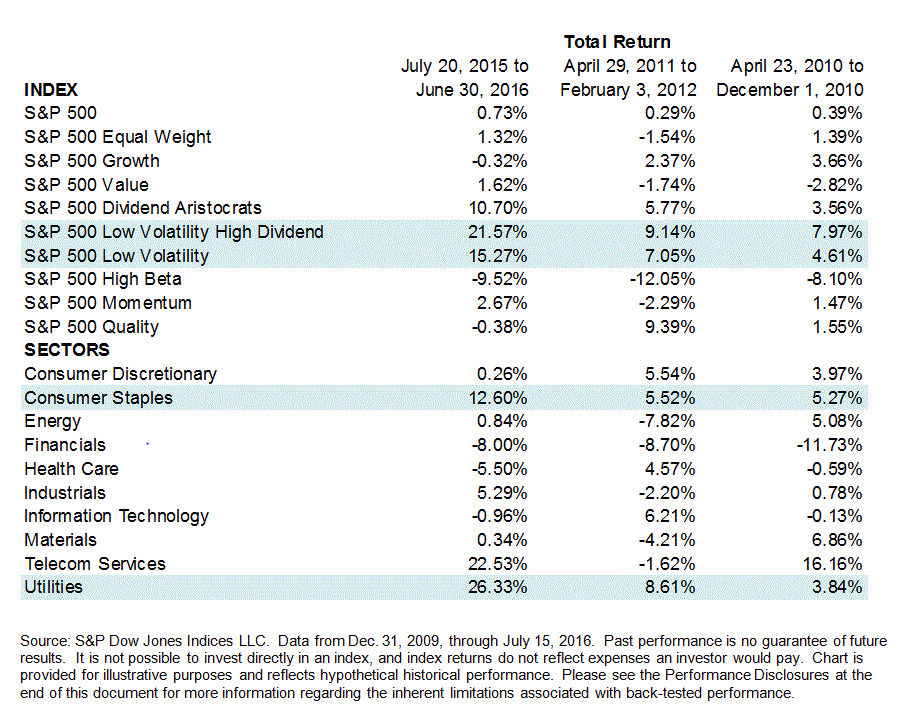Yesterday’s close brought the S&P 500 to another new pinnacle – the seventh new high reached since June 30th, when the market surpassed its previous peak from July 20, 2015. In the context of the market’s recent bullish run, a number of commentators have remarked on the surprising outperformance of defensive strategies and sectors.
But this should not come as a surprise. We only recognize a market peak in hindsight, after prices have gone through a period of decline. Eventually a trough is reached (most recently on Feb. 11, 2016), prices begin to recover, and the old peak is surpassed (as on June 30th). But in the period between the old peak and the first close that surpasses it, the market’s total return is approximately zero. In such an environment, it’s not surprising that defensive indices exploiting low volatility and dividend factors would do well.
Since the 2008 financial crisis, there have been two other episodes when the market lost more than 10 percent and subsequently recovered. In both of them, as in the most recent periods, the most consistent outperformers were defensive strategies such as the S&P 500 Low Volatility and S&P 500 Low Volatility High Dividend Indices, as well as defensive sectors such as Utilities and Consumer Staples.


We don’t know where the market will go from here. What we do know is that there’s nothing particularly remarkable about its most recent recovery.
The posts on this blog are opinions, not advice. Please read our Disclaimers.










